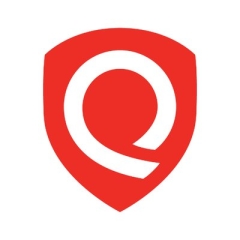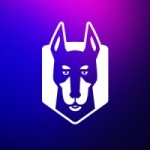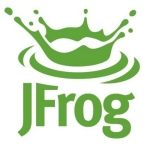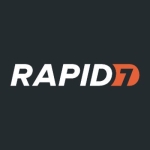What is our primary use case?
It's primarily for vulnerability management. We use VMDR to deploy the cloud agents and scanners in our environment to cover everything holistically. We also use it for service integration so that vulnerabilities can be tracked through there. So, it's more or less vulnerability management.
How has it helped my organization?
We need to scan different kinds of assets. It could be our desktops, laptops, servers, and network devices. VMDR enables us with the sort of licensing where we can either deploy agents or scanners or both. So wherever we can deploy agents, we are deploying agents for scanning, for instance, on our workstations and servers.
And then for network devices, we use just the scanner capabilities of Qualys. So that's why we use this VMDR solution across different sorts of assets in a wide environment.
When we use Qualys VMDR's agents, they usually scan or probably reconvene the vulnerabilities within four hours. So, anything that jumps its way immediately alerts us within a few minutes that something is wrong, and we can check on those terms.
Other than that, I think it does have a module that can help us prioritize vulnerabilities, not only with vulnerabilities that have been attacked in the wild but also if any vulnerabilities have an exploit available. So those sorts of insights do provide us. It should really help us to prioritize vulnerabilities based on the threats that are out there.
It improved the visibility of the organization. It enables us to, first of all, identify all the assets and then scan them for the vulnerabilities. And then it also helps us to prioritize which vulnerabilities we have to fix first, and we can map out strategies. So, it is what it is meant for, and it is doing really, really good in that sense.
What is most valuable?
First of all, the licensing products itself is a great tool for VM because it's easy to use, and its reporting is excellent. It gives you a lot of ability and tweaking options to get what you want out of the reports. It gives you a lot of options, and it integrates with our ServiceNow for ticketing and all. So that is also a great feature. Then, the licensing that comes with VMDR enables us to scan different devices without getting any sort of extra license. So, it covers everything under one bundle.
It's the capability of scanning that has proven to be most effective in the risk management aspect. The less number of false positives and the authenticated basic scans are more concrete. So, the reliable reports and the efficiency of scans are something that we appreciate with all of this.
So, it does reduce those false positives and gives us a more concrete report.
What needs improvement?
From the application security perspective, Qualys has a way to go. We probably use it for infrastructure scanning, but I feel that Qualys can do better in application scanning as well.
Infrastructure scanning is fine. It's doing good with that. However, there is room for improvement in application scanning.
For how long have I used the solution?
I have been using it since the beginning, even before VMDR. I used Qualys for scanning. I've been continuously using Qualys for at least a decade. So it's almost ten years I've been working with Qualys.
What do I think about the stability of the solution?
I would rate the stability a nine out of ten. It has been stable for me. I didn't face any challenges. It worked fine for me.
What do I think about the scalability of the solution?
I would rate the scalability a nine out of ten.
How are customer service and support?
This is probably where Qualys can improve themselves a little bit and help us get a little bit quicker responses. So, that's where I think they can definitely spend some time.
Knowledge-sie the customer service and support are fine, I want them to improve the response time.
How would you rate customer service and support?
Which solution did I use previously and why did I switch?
I have used tools like Rapid7, Nessus. But overall, I feel that Qualys has better capabilities in terms of scanning and then in terms of reporting as well.
So I can compare it with Rapid7 and Tenable Nessus, and Qualys is definitely way ahead from its competitors in that sense.
How was the initial setup?
The initial setup is straightforward. It's nothing complicated. I think we just need to deploy agents and enable our scanner for the connectivity, and then it's all good.
It is in an hybrid environment.
The deployment time depends upon the size of the infrastructure. It usually doesn't take much time. You just need to deploy the scanners and agents, which is also usually automated. I don't see it as very time-consuming. So, if I have to rate between one to ten, then I would rate around seven to eight, somewhere down to cover that.
It does require maintenance because it keeps updating its agent version as well, but I see that this is also automated. And then, if we have deployed this on hardware as well, like Windows and all, those also need to be updated online. But, the maintenance is required for sure.
From the security side, we have seven to eight people who are managing Qualys. But then we have people from IT as well who are supposed to see the vulnerabilities and remediate those. So such roles, we also have in Qualys that need the access and also on the vulnerabilities.
What was our ROI?
I can see the time-to-value benefits of Qualys. It's more of a time and resource. Security is always an expense. We don't get active revenue out of it, so it's more of an expense.
So returns in terms of risk reduction. It helps us to identify those potential vulnerabilities on time and help facilitate those. So in those terms, it's a return on investment.
It saved us 20% of time because it is easy to use, and since it is integrated, we don't have to touch anything much.
What's my experience with pricing, setup cost, and licensing?
The pricing is a little expensive on that sense, but it also delivers the value. So, if anybody has the budget for Qualys, then, they should go with Qualys for sure.
What other advice do I have?
I would recommend Qualys VMDR to other users because it is efficient and reliable, and it does what it's supposed to.
Overall, I would rate it an eight out of ten.
Disclosure: My company does not have a business relationship with this vendor other than being a customer.





















